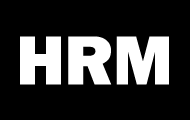How Canadian Conservatives Lost the 2019 Election because of bad marketing.
The 2019 Canadian Federal Election was an interesting one. The Conservative Party won the popular vote, and by a lot in fact, 200,000+ votes, yet they still lost the election by 157 to 121 seats. Considering all the advantages going into the election, this was totally avoidable and simply the result of just plain terrible marketing. In fact, if the Conservatives were smart, they only needed about 12,457 votes (or 0.07% of the popular vote) and they would be in power today.
Here is how:
If we look at the ridings, there were a lot of close calls. These close ridings were also typically close in previous elections, which for a modern campaign manager is great because it gives you a target list of ridings that you can potentially swing. In fact, this time around there were 21 ridings that the Conservatives lost by 1000 votes or less. In these ridings, they would have only needed to swing on average 1.92% of the vote their way and they would have won the riding. Let that set in for a second… If the Conservatives swung the vote by only 2% in 21 tiny ridings, they would have won the election.
So what happened? When you see results like this, it become very clear that one of the parties was specifically targeting the ridings, and the other party wasn’t or was certainly not doing a good job of it. And from speaking with party insiders, I know that the Conservatives were not microtargeting these ridings.
What should they have been doing?
Micro-targeting:
Microtargeting is simply political advertising aimed at an individual person instead of a broad audience. How political advertising used to be done; was a candidate would put up a billboard, or get lawn signs made, and they would make them as generic as possible. Usually just “Vote for me” with zero reasons why a person would want to vote for them, or would use extremely broad topics, like “A vote for me is a vote for the economy”. Nowadays, this type of advertising is essentially useless, and voters are blind to it.
But what if you could first learn about someone, learn their likes, their dislikes, charitable cause they donate to, who they feel like voting for at the moment, the most important qualities they want to see in a politician, who they voted for in the past and what they see as the most important issues that they want the candidate to address? Now, what if you could also make a billboard that you place in that same voter’s front yards that only they see, what would that billboard look like? It would read more like “Vote for me, because like you, I want to fund children’s hospitals, and I am pro-life and I want to lower your taxes, I am known for being honest (a quality I know you find most important), and I also like dogs…” – knowing that those issues and qualities of a candidate, and those platform stances, are all in perfect alignment with the single voter seeing that personalized billboard.
Alternatively, if you know that the person is thinking about voting for the other guy, or has in the past, then you can use the info you know about them to change their opinion or suppress their willingness to vote. In this case, the billboard would look more like “Don’t vote for that guy, because he is pro-choice, once voted to defund a children’s hospital, has voted twice to raise your taxes, flip-flopped on issues you care about, cheated on his girlfriend in high school… and is a total cat person…”.
During the Doug Ford campaign, as well as a Mayoral Race in Vancouver, I ran tests to see if people would answer questionnaires like this, and amazingly, yes they will. In fact, you can get people to see an ad on Facebook (or Instagram, or anywhere on the internet really) about a Political Quiz, answer 50+ of the most intimate details about their political views and personal details through a chatbot, in specific key ridings, database all this info, and then immediately use all that information to create hyper-specific political ads that tells the user all the reasons that person should vote for one candidate and not the other, knowing 100% that this ad will be in complete alignment with how they feel. Shocking, it costs roughly only 39 cents, per voter, to build that database on them, and then show them that hyper customized ad, and then have them click that ad and go to a specific politician’s website.
And that is only the beginning. Once you start interacting with the voter, you can put that voter into what is essentially an optimized sales conversion funnel using all the modern tricks that digital markets use to get you to buy a product online (social proofing, retargeting specific actions on site, drip campaigns…). Frankly, getting someone to vote for a specific candidate, is easier to do then getting that person to buy a product from you. Buying a product costs them money, a vote in your favor costs them nothing but a pen stroke.


Recent Comments